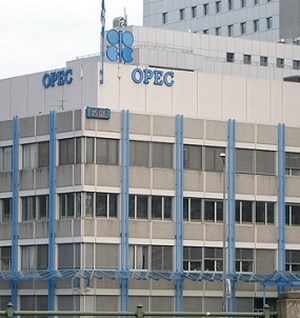Saudia Arabia to extend oil production cut, OPEC delegates predict
Saudi Arabia is expected to extend its unilateral 1 MMbpd oil production cut for at least another month, as global crude markets remain pressured by economic fears.
Riyadh surprised oil traders earlier this month when it announced the extra cutback, which came on top of curbs it was already making with fellow OPEC+ producers. The supply reduction will take effect in July, with the possibility of extensions.
As lackluster demand in China caps crude prices near $75 a bbl —below the level the kingdom needs to cover its budget — almost all traders and analysts surveyed by Bloomberg predict a continuation of the Saudi cut into August. Several OPEC+ delegates also said that, while the kingdom’s decisions can be unpredictable, an extension looks likely.
“It would be too damaging to prices to remove it at this time, given the fragility of sentiment,” said Gary Ross, a veteran oil consultant turned hedge fund manager at Black Gold Investors LLC.
Oil prices were widely expected to rally this year, but have instead sagged about 13% in London as China’s post-pandemic demand rebound proves disappointing, and climbing interest rates spread fears of recession elsewhere. Wall Street forecasters like Goldman Sachs Group Inc. and Morgan Stanley have abandoned projections for the return of $100 per bbl crude.
The price retreat has brought relief for inflation-wracked consumers in nations such as the U.S., but it’s putting a financial strain on the Saudis, the de facto leaders of an alliance between the Organization of Petroleum Exporting Countries and other producers known as OPEC+.
The solo cut is set to slash Saudi output to 9 MMbpd, the lowest since June 2021, when output was still recovering from the depths of the Covid-19 pandemic.
It only applies for one month initially, but when unveiling the move Saudi Energy Minister Prince Abdulaziz bin Salman said that he would keep traders “in suspense” on whether it would remain in place after July. The prince, who takes pleasure in wrong-footing oil speculators, may give some indication when he addresses an industry conference hosted by OPEC in Vienna next week.
Bloomberg, Reuters and the Wall Street Journal have had accreditation to the event revoked, following a similar ban on attending OPEC’s press conference in June.
Some OPEC+ delegates warned that the Saudis could spring another surprise and reverse the million-barrel cut in August. Two of the 23 analysts surveyed said the kingdom can safely revive production as global oil markets are already on track to tighten and bolster prices.
In theory, forecasts from leading oil-market institutions back up that argument.
World oil demand will exceed supply by roughly 2 MMbpd in the second half of the year as the recovery in Asia gathers pace, depleting world inventories sharply, according to the International Energy Agency. OPEC’s own data also indicate a significant shortfall.
Based on those numbers, the Saudis should be able to cancel the extra supply curbs and start increasing production. Yet recent market trends indicate confidence in that upbeat outlook is waning.
“The current market weakness can be observed through the contango,” said Ole Sloth Hansen, head of commodity strategy at Saxo Bank A/S. “The Saudis must extend the cut.”
A large contributor to the output surplus has been OPEC+ itself, in particular leading member Russia. Moscow has dragged its feet on implementing is pledged cuts as it seeks to keep funds flowing for its war in Ukraine, defying predictions that international sanctions would cause its exports to wither.
The weakening of President Vladimir Putin’s grip on power following a mutiny by a warlord earlier this month has only added to doubts on whether Moscow will ever deliver its agreed share of OPEC+ cuts.
Besides Russia, oil flows from OPEC+ have also increased from two other members subject to U.S. sanctions, Iran and Venezuela. Exports are rebounding as China hunts for cheap barrels, and as President Joe Biden’s administration engages in tentative diplomacy with both nations.
“As Tehran silently increases its market share in China, Saudi Arabia has an Iran problem,” said Viktor Katona, head crude analyst at market intelligence firm Kpler Ltd. “I expect them to roll over the million-barrel cut into August, but we might be nearing the limits of Saudi patience.”
Source: Worldoil.com
page_views: 154


